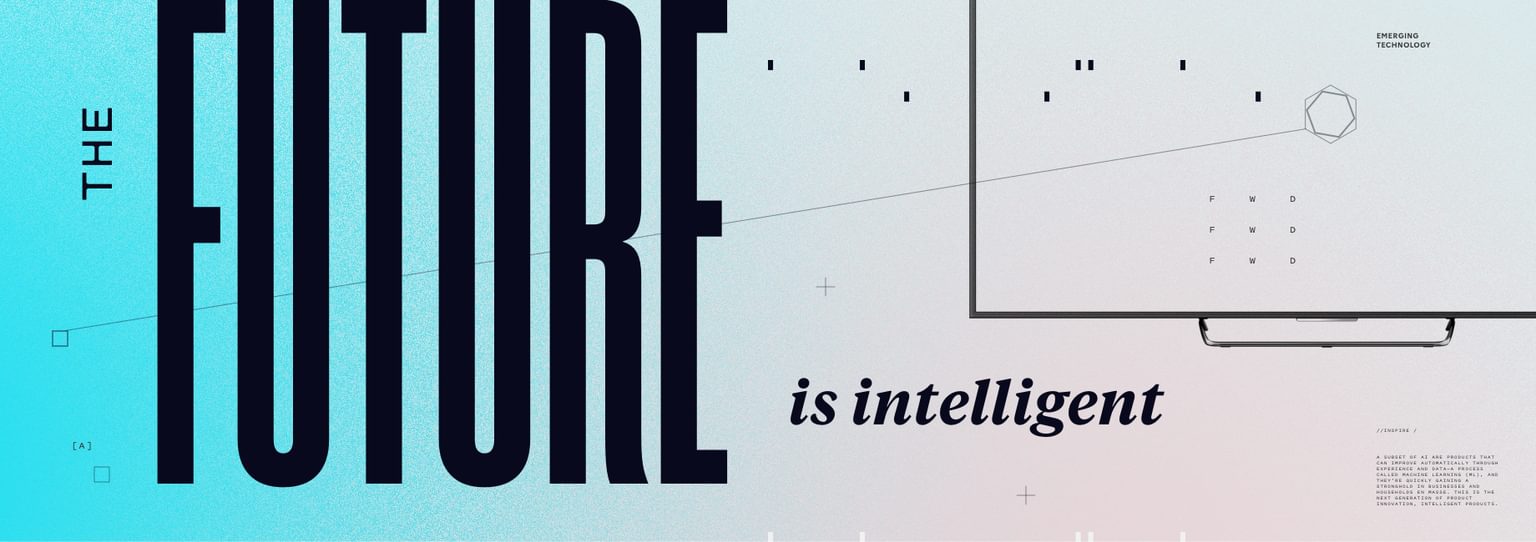
Intelligent Products
Products are static. Intelligent Products are dynamic. Which do you think your customers are choosing?
Products that inspire customers
Even if you’re not a fan of science fiction, you’re aware of humanoid machines like C-3PO or the Iron Giant, right? Machines like these, ones that are curious, compassionate, funny, and empathetic are no longer the things of fiction.
Today, intelligent products can take insights, make them actionable, then create more powerful, meaningful, and performant products over time. They use artificial intelligence (AI) to create algorithms, systems, and technology capable of functioning in a smart, human-like manner.
A subset of AI are products that can improve automatically through experience and data—a process called Machine Learning (ML), and they’re quickly gaining a stronghold in businesses and households en masse. This is the next generation of product innovation, Intelligent Products.
In fact, intelligent products are the future—Gartner predicts that by 2022, 72% of customer interactions will include emerging technology, like ML applications.
Intelligent products are dynamic products
What are intelligent products? First, let’s discuss what they’re not. Generally, products have two highly distinct classifications: static and dynamic.
A typical product is static and often has rule-based personalization. It does exactly what it’s programmed to do, typically following a cause-and-effect pattern, like a light switch. Flip it up—cause—and the light turns on—effect.
Alternatively, an intelligent product has ML personalization, a personalization technology that uses algorithms and predictive analytics to determine and display the most relevant and complete experiences—in real time and in a highly scalable way. They’re highly dynamic, advanced technology products.
Voice assistants like Amazon’s Alexa is a great example of an intelligent product. She learns the habits and preferences about a specific user, then makes suggestions to maintain or improve the user’s experience. For example, Alexa can track and learn that you turn on your outdoor lights at sunset, leading her to recommend that she automatically turns the lights on each day, in accordance with when the sun sets throughout the year.
Intelligent products gather and monitor their own data, then analyze and transform that information into knowledge that can continuously optimize the product to remain relevant and dynamic, always improving. An intelligent product never reaches sub-0 value requiring it to be phased out for a new product — instead the ongoing changes help give the product a long lifecycle.
So, how does a product become intelligent? It requires an interconnected, interdependent ecosystem.

The 4 pillars of intelligent products
Intelligent products are the culmination of four pillars: technology, intelligence, experiences, and operations.
Technology: The product must upgrade and up-level internal systems designed to support current and future needs.
Intelligence: The data needs to be processed by ML models and predictive analytics to determine and display the most relevant and complete experiences.
Experiences: Products are designed with intent from the start to understand, plan, and deliver what an experience needs to be, in order to align with and delight users.
Operations: To build products quickly with continuous updates and refinements, teams and workflows need to be modernized or renewed.
Intelligent Products are good for business. Even better for people.
Businesses who rely on ML models often see cost reductions, improved operations and/or increased revenue. In fact, businesses that successfully integrate intelligence into sales, increased their leads by more than 50% and realized cost reductions of 40-60%.
Amsterdam’s The Edge is arguably the smartest building in the world. ML is in its DNA. The workspace includes a digital ceiling of LED panels with 28,000 sensors (Pillar 1: Technology) that track motion, light, temperature, humidity, and more. These sensors collect data on how an employee works by tracking their schedule, lighting, and temperature preferences (Pillar 2: Intelligence), then modifies whatever individual space the employee selects to provide them their preferred environment (Pillar 3: Experiences), while constantly analyzing and refining employee’s experiences and data inputs to evaluate what other features or improvements should be added to benefit the employees (Pillar 4: Operations).
Not only do employees experience immediate customization, but the building is also green, earning a 98.4% sustainability rating, the highest ever awarded by BREEAM—the world's longest established method of assessing, rating, and certifying the sustainability of buildings.
Intelligent products are adaptive, personalized, and constantly learning about their environment. ML is revolutionizing customers’ lives: making tasks easier, health more accessible, and personal choice the criterion for engagement.
Another example of this is Google’s partnership with the Cancer Research U.K. Imperial Centre to detect the signs of breast cancer more accurately.
Google’s AI system included an ensemble of three deep learning models, each operating on a different level of analysis: individual lesions, individual breasts, and both lesions and breasts. The final prediction of breast cancer came from the average of the three independent models.
Researchers trained the AI system using mammograms from 91,000 women in the UK and US, which were then tested for accuracy by searching for cancerous cells in mammograms of women who already had the disease.
Google’s Deep Learning AI identified malignant tumors with an 89% accuracy rate, compared to just 73% achieved by human pathologists.
Not only did Google’s Deep Learning AI reduce the number of errors in diagnoses, but it also identified malignant tumors with an 89% accuracy rate, compared to just 73% achieved by human pathologists.
These AI innovations have become a very important and useful AI tool for doctors. Still, a tool doesn’t entirely replace human engagement. Doctors are still responsible for looking closely at the numbers to verify the inputs and outputs that lead to the conclusion to create the right treatment plan for the patient.
Overall, the study reveals how innovation and consumer needs are spurring demand for emerging technologies in their everyday lives.
For more information about this study, and how ML is transforming lives, read more about it here.
Dynamic products for dynamic tomorrows
Intelligent Products open the doors to endless opportunities. Download our latest Product Engineering whitepaper to learn how a transformational approach to product engineering fosters better customer experiences and sustainability for your business.
We’re excited to share how Intelligent Products are shaping the future, that this is just the first article in a three-part series. We hope you’ll check them all out!
As emerging technologies converge, business can deliver more. For a more complete picture of what intelligent products can do for you, download the full whitepaper. Reach out if you’re interested in learning more about intelligent products.